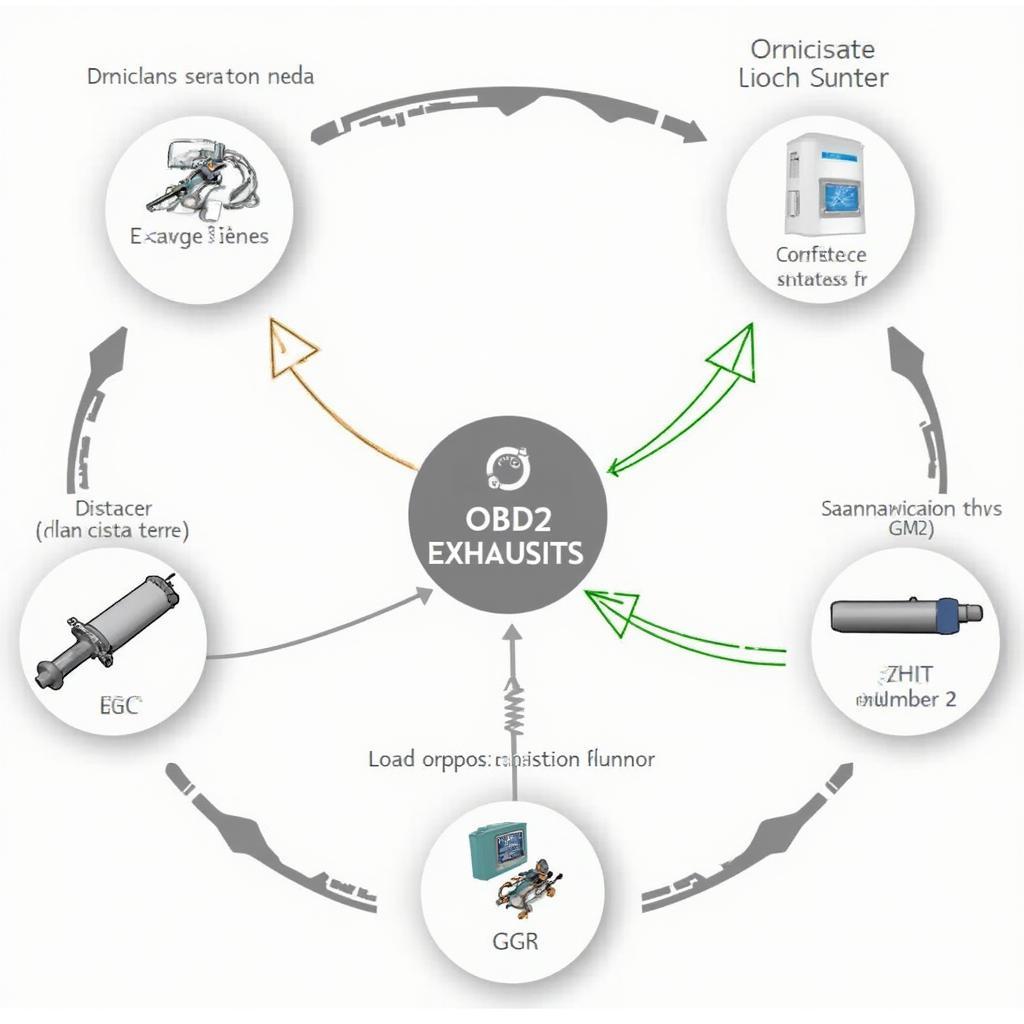Thinking about fooling the OBD2 on your exhaust system? You’re not alone. Many car owners explore this option, hoping to bypass emissions regulations or address a perceived problem. This article dives deep into the methods, consequences, and ethical implications of tampering with your OBD2 system, particularly concerning the exhaust.
Understanding the OBD2 and Exhaust System Connection
The OBD2 (On-Board Diagnostics II) system is like your car’s central nervous system. It monitors various components, including the exhaust system, to ensure optimal performance and compliance with emissions standards. The system uses sensors to track parameters like oxygen levels, catalytic converter efficiency, and exhaust gas recirculation (EGR) functionality. Any deviation from the expected values triggers a diagnostic trouble code (DTC), illuminating the check engine light.
Why People Attempt to Fool the OBD2 System
There are several reasons why someone might consider fooling their OBD2 system regarding the exhaust:
- Failing Emissions Tests: A faulty catalytic converter or other exhaust component can lead to emissions test failure. Some attempt to trick the system instead of addressing the underlying issue.
- Modifying Exhaust Systems: Aftermarket exhaust modifications, while enhancing performance or sound, can sometimes trigger DTCs. Some individuals attempt to bypass these codes instead of ensuring proper installation and compatibility.
- Cost Concerns: Replacing a failing catalytic converter can be expensive. Some drivers see fooling the OBD2 as a cheaper alternative, albeit a risky one.
Methods Used to Fool the OBD2 System (and Why They’re Bad Ideas)
Several methods are employed to try and fool the OBD2 system, but most are detrimental to your vehicle and the environment:
- O2 Sensor Spacers: These devices physically distance the downstream oxygen sensor from the exhaust flow, attempting to trick the system into thinking the catalytic converter is functioning correctly. However, this doesn’t address the underlying issue and can lead to further damage.
- OBD2 Simulators: These devices intercept communication between the OBD2 system and the vehicle’s computer, mimicking the signals of a functioning exhaust system. This is a blatant attempt to circumvent emissions regulations and can have serious legal ramifications.
- Software Modifications: Altering the vehicle’s ECU (Engine Control Unit) software can disable certain DTCs related to the exhaust system. This is highly risky, can void your warranty, and potentially damage your vehicle’s engine.
The Risks and Consequences of Fooling the OBD2
Tampering with your OBD2 system can lead to several negative consequences:
- Increased Emissions: Bypassing emissions controls contributes to air pollution, impacting public health and the environment.
- Legal Penalties: In many jurisdictions, tampering with emissions control systems is illegal and can result in hefty fines.
- Voided Warranty: Modifying your OBD2 system can void your vehicle’s warranty, leaving you responsible for costly repairs.
- Potential Vehicle Damage: Incorrectly modifying the system can damage other components and lead to further issues down the line.
“Fooling the OBD2 is like putting a band-aid on a broken bone,” says John Smith, ASE Certified Master Technician. “It might temporarily mask the symptom, but the underlying problem remains, and you’re likely to cause further damage in the long run.”
Addressing the Root Cause: The Right Approach
Instead of trying to trick the system, addressing the root cause of the issue is crucial. This may involve:
- Replacing a Faulty Catalytic Converter: If your catalytic converter is failing, replacing it is the proper solution.
- Repairing Other Exhaust Components: Addressing leaks or other issues within the exhaust system can resolve DTCs and ensure proper functionality.
- Consulting a Qualified Mechanic: A professional mechanic can diagnose and repair exhaust system problems effectively, ensuring compliance with emissions regulations and optimal vehicle performance.
Conclusion
While the allure of fooling the obd2 on your exhaust system might seem tempting, the risks and consequences far outweigh any perceived benefits. Addressing the root cause of the issue is not only legally and ethically responsible but also ensures the long-term health of your vehicle and the environment.
FAQ
- Is it illegal to fool the OBD2 system? Yes, tampering with emissions control systems is illegal in many jurisdictions.
- Can fooling the OBD2 damage my car? Yes, incorrect modifications can lead to further vehicle damage.
- What’s the best way to address an OBD2 exhaust code? Consult a qualified mechanic to diagnose and repair the underlying issue.
- Are O2 sensor spacers a good solution for failing emissions tests? No, they are a temporary fix that doesn’t address the root problem.
- What are the environmental impacts of fooling the OBD2? Bypassing emissions controls contributes to air pollution.
Need further assistance? Contact us via WhatsApp: +1(641)206-8880, Email: [email protected] or visit us at 789 Elm Street, San Francisco, CA 94102, USA. Our customer support team is available 24/7.


